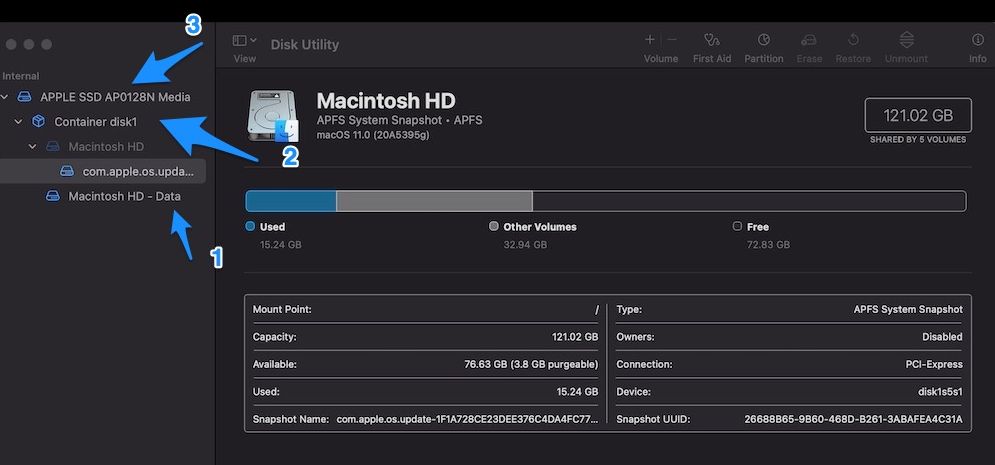
- #RESCUE DISK FOR MAC HIGH SIERRA HOW TO#
- #RESCUE DISK FOR MAC HIGH SIERRA MAC OS X#
- #RESCUE DISK FOR MAC HIGH SIERRA SOFTWARE#
- #RESCUE DISK FOR MAC HIGH SIERRA MAC#
#RESCUE DISK FOR MAC HIGH SIERRA HOW TO#
Read on to learn how to create OS X Recovery Disk that you can easily access anywhere, anytime. In these situations, having your OS X Recovery Disk easily accessible on an external USB drive or SD card would be beneficial.
#RESCUE DISK FOR MAC HIGH SIERRA MAC#
This method will also not work if you had upgraded an old Mac to run on a newer version of OS X. But what how can you access this hidden partition if something goes wrong with your hard drive? You can always connect your computer online and initiate the OS X Internet Recovery feature, but realistically, you may not always have an internet connection. Mac users could no longer depend on physical recovery disks to help them fix any problems on their machines. Since OS X Mountain Lion, everything went digital and maintenance-minded. Part 2 How to Create an OS X Recovery Disk Click the "Repair Disk" button to start fixing this button. To check the problem your Mac has, click the "Verify Disk" button.
#RESCUE DISK FOR MAC HIGH SIERRA SOFTWARE#
Also, if you have any other software recommended, please share with us.Here is how to repair Mac disk and recover Mac with OS X Recovery Disk: Choose the one meets your need and give it a shot. Read up here, you may have a basic knowledge on 3 best data recovery utility for Mac. Prosoft Data Rescue 4 can be run in macOS 10.8 or later, and a secondary Hard Drive and Internet connection is needed.
#RESCUE DISK FOR MAC HIGH SIERRA MAC OS X#
Mac Data Recovery is compatible with Mac OS X 10.13(High Sierra), 10.12(Sierra), 10.11(El Capitan), 10.10(Yosemite), 10.9(Mavericks), 10.8, 10.7, or 10.6, 256 MB or more of RAM (1024MB Recommended).ĬleverFiles Disk Drill works well with Mac OS X 10.8.5 or later, with 22MB disk space is required. Prosoft Data Rescue 4’s clone function allows you to copy a hard drive or volume to another hard drive or volume, so that the copy may be scanned, reducing the wear-and-tear on the original hard drive. The software also gains RAID support, the ability to work with more than one scan, and reveals the total number of files in selected folders.ĬleverFiles Disk Drill also features as all-in-one tool, helping you backup data from Mac, find duplicated files and clean up them, as well as create boot drive. Mac Data Recovery have a function to scan for lost partitions and recover data from it. Similar to Disk Drill, you can only choose the hard drive/disk, flash drive as the location where your files deleted from, but not the data type. Besides quick and deep scan mode, it also allows you to only scan for deleted data. Prosoft Data Rescue 4 enables you to start new scanning and resume the previous scanning process. You can select the target disk to scan deleted data from, but you cannot choose the specific type of file. No matter you lost data owing to Disk Utility error or corruption, the software can also get it back to your macOS X. >CleverFiles Disk Drill allows you to scan the hidden drive, but you have no option for the quick or deep scan mode.

Then, you can recover deleted data from Mac selectively or in bulk. After the scanning, all media files will be displayed with thumbnail, so that you can easily find the one you need. This will shorten the scanning process and save your time a lot.


Before scanning, you can choose which type of data to scan if you want to restore only a specific kind of file, as well as select the concrete location in Mac instead of the whole device. Mac Data Recovery provides two scanning modes, Quick Scan & Deep Scan, so that you can have a comprehensive scanning on the Macbook/iMac. Check the comparison on best Mac data recovery utility below. In this guide, we’ve tested 3 most popular data recovery for Mac. Data Recovery utility for Mac will do just like that, helping you recover data from HFS/hard disk, partition, flash drive and more. For most occasions like emptied trash bin, unintended deletion, format, broken or lost partition, etc., what you would have done is to turn back the clock. Even though your Macbook/iMac is connected to iCloud, you know that it’s not the panacea to prevent data being deleted.


 0 kommentar(er)
0 kommentar(er)
